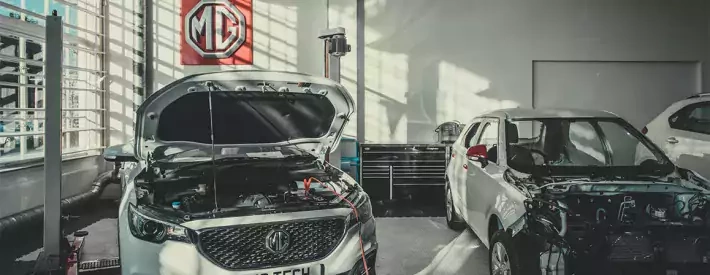Get your training sorted to succeed

In this article: The industry’s changing so employers and employees need to keep skills up to date otherwise risk being left behind. Avia Sports Car Director Hayley Pells explains why it’s so important
Historically the path to becoming an MOT tester meant that MOT Test Stations would nominate a technician they considered capable of meeting the standards. But things have changed.
You don’t need to be nominated anymore and any technician, with the correct qualifications and experience, can complete the training themselves. It’s a change that’s been in place for several years, but the shift from the employer to the employee regarding the purchase of training has been glacial.
The old approach can be seen in workshops up and down the country that still purchase the skills they need by either buying in and creating a new role, or by taking control and upskilling an existing technician.
But now more than ever the need for both employers and employees to take responsibility for training is incredibly important. If both parties work in unison, the better the outcome.
Demand for training, throughout the industry has never been greater, with recognition of value for soft skills as well as technical increasing the professionalism of the aftermarket. A well mapped career path is no longer restricted to the main dealer franchises, small businesses can also offer opportunities for training, scaffolded with recognised qualifications and those employers regularly cover the cost of training, including the time to complete it.
A business’s need to protect itself translates into a shift in how employment contracts are written, providing financial protection and perhaps surety that this investment will benefit the sponsoring organisation.
Training then becomes part of a package to attract talent to the workplace with many firms offering employer solutions to map the path to Master Technician status for example.
A recent straw poll I conducted through social media showed that the majority of the aftermarket respondents report they acknowledged the purchase of training should be the sole responsibility of the employer. Many of the additional comments to the poll coming from small garage owners who were already extremely active in this area. As encouraging as this is, it may contribute to a skill gap that the industry can’t afford.
For the workshop that enjoys the status quo, or is too busy to dedicate workshop time to the curation and completion of training, technicians can be left behind their peers in the wider industry.
There is opportunity for more sinister motivation to deny upskilling which keeps wages low and the opportunity for employment elsewhere reduced as the rest of the market moves on. This is not only disappointing for the career prospects of the technician, potentially leading to disengagement from the sector altogether, but as technology progresses but training doesn’t keep pace, it could become increasingly dangerous.
Agility in training mobility is key to true inclusivity and opportunity for those who seek it. Rather than reliance of training management being the sole responsibility of employers, the technician can additionally, curate their own training.
So as an industry that requires problem solvers and increasingly more digital skills, the IMI digital CPD log can become a passport to a desired role, showcasing additional learning gained through online learning, reading technical books and articles, in addition to formal training and qualifications. Accommodating a digital map for a technician to create themselves could be the next step in self-sufficient training mobility.
As the industry shifts and adapts, those working in it need to match the pace of change, so the emphasis on both employers and employees to maintain, if not increase, training will grow.




